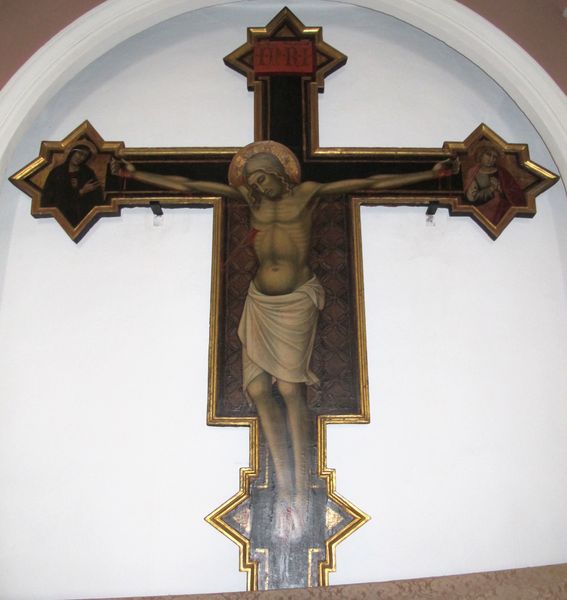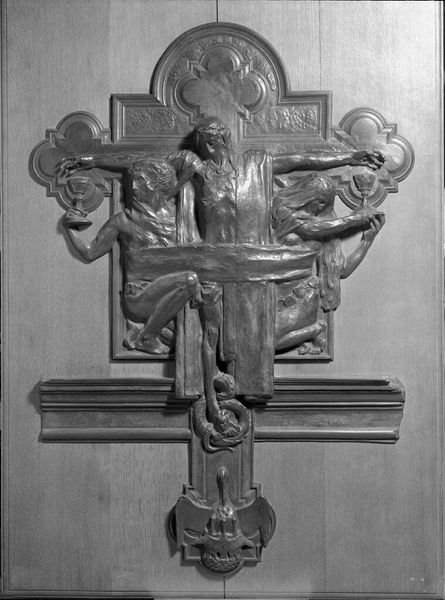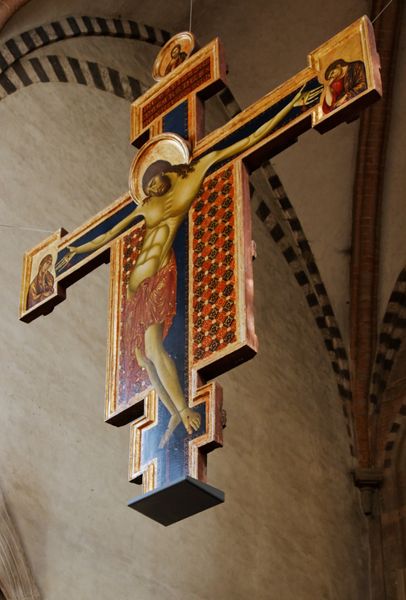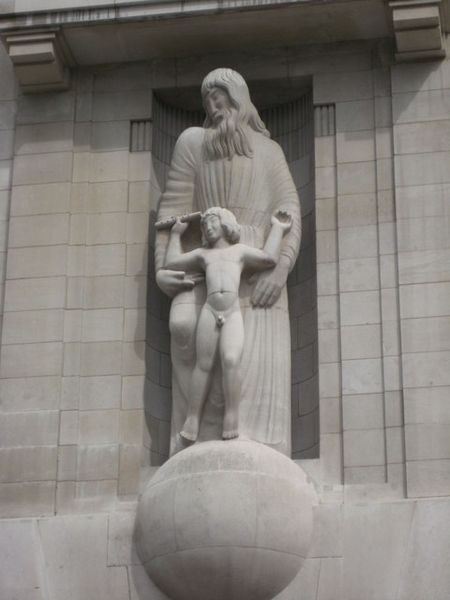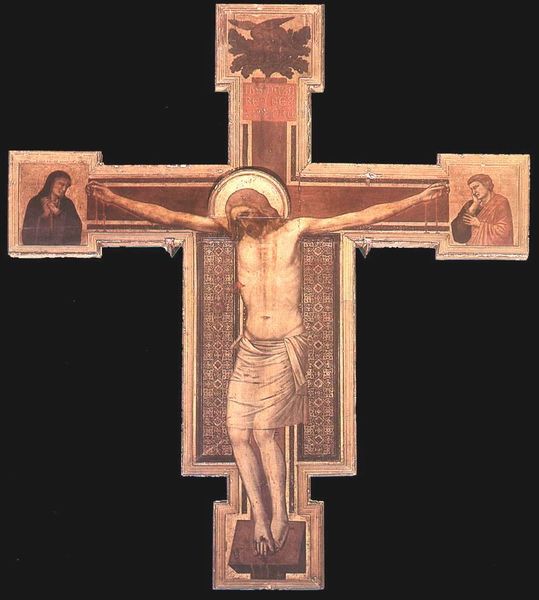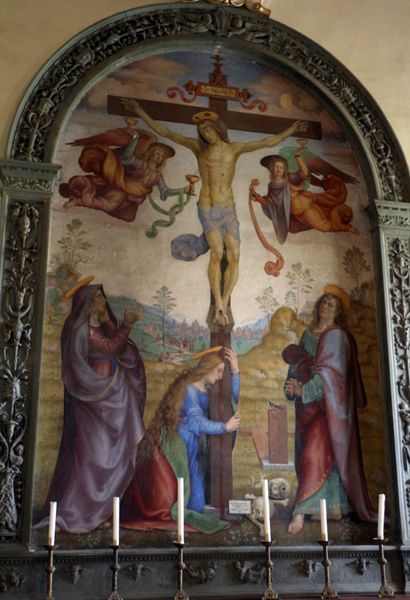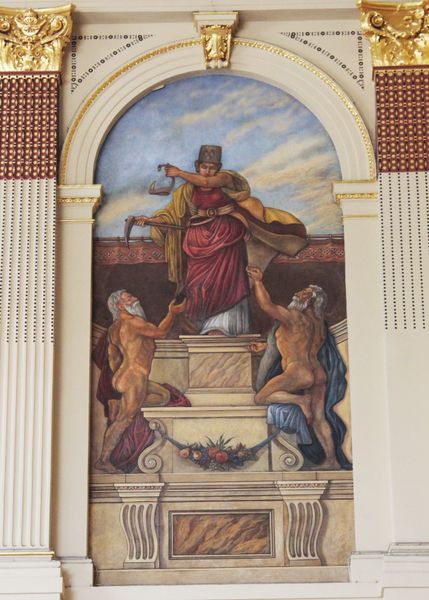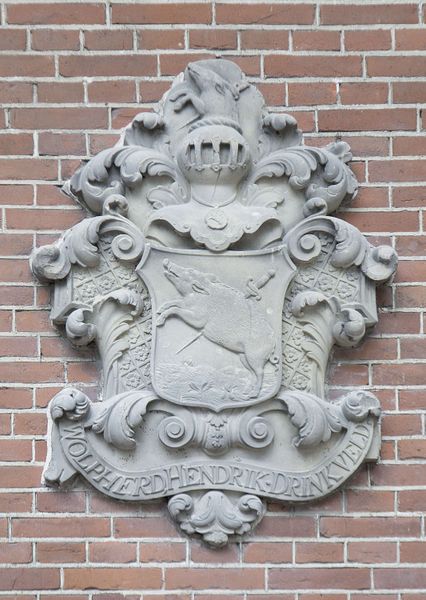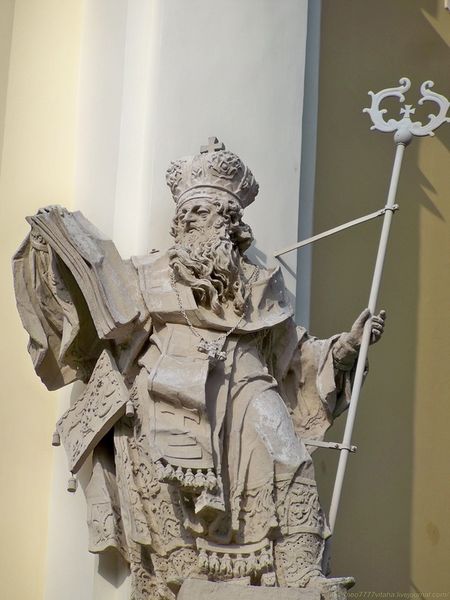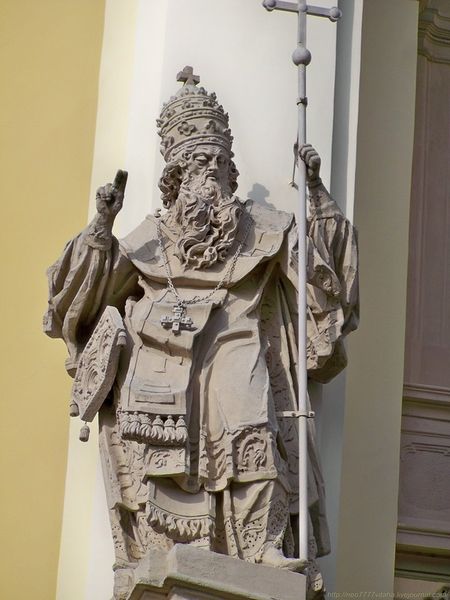
carving, relief, public-art, sculpture
#
public art
#
statue
#
medieval
#
carving
#
relief
#
public-art
#
figuration
#
historic architecture
#
sculpture
#
history-painting
#
historical building
#
statue
Copyright: Public domain
Editor: Here we see Eric Gill’s sculpture, "Calvary, St. Thomas the Apostle Parish Church, Boston Road, Hanwell, London." It's integrated into the architecture itself. I’m struck by how tactile the figures appear and by how the material seems to soften the religious scene. What can you tell me about it? Curator: Well, considering it from a materialist perspective, notice how Gill has brought the traditionally separated realms of "high art" and craft together in this public artwork. Carving directly into the church façade, he blurs the lines between sculpture and architecture, transforming the building itself into a canvas. What impact does this blending of roles have, in your opinion? Editor: I think it definitely makes the art more accessible and integral to the community. It isn't something confined to a gallery or museum but something everyone interacts with just by being there. Does the specific choice of material, perhaps the type of stone, hold any significance for you? Curator: Absolutely. The materiality speaks volumes. The stone itself is a product of specific labor practices, a geological history, and a deliberate choice. By focusing on a rough, direct carving style, Gill keeps visible the traces of production. It rejects the seamless, idealized aesthetic often associated with religious sculpture. We must question: what type of stone was selected and how was it quarried? All of this reflects production value. Editor: So, by emphasizing the making process and materials, Gill shifts the focus away from the purely spiritual interpretation of the crucifixion? Curator: Precisely. The act of creation itself becomes part of the artwork's meaning, challenging traditional hierarchies that often prioritize the spiritual over the material, labor, or process of making. He is in effect using the stones to create his artistic interpretation. It shows his labor in art. Editor: That's fascinating. I hadn't considered the socio-economic implications of the carving itself. It seems that every choice, from the material to the technique, speaks volumes about his view of art and society. Curator: Indeed. Reflecting on it now, the way it all interacts as a process offers us great context to it all.
Comments
No comments
Be the first to comment and join the conversation on the ultimate creative platform.
